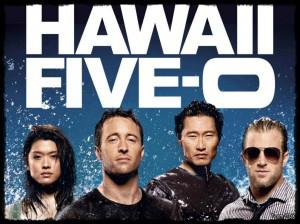
Television procedural programs are insulting to your intelligence. But you’re on the Internet, so you probably knew that. Somewhere around the umpteenth spin-off of CSI (I think it’s called CSI: Tallahassee; they mostly find and return stolen plastic lawn furniture) I had an epiphany: popular TV shows have become structured exactly like video games. Tell me, what exactly is separating shows like Hawaii Five-O from the mid-90s PC desktop game Myst? One is a rudimentary puzzle-solving point-and-click video game where the player explores a small, static island, and the other is a show where Scott Caan and Jin from Lost explore a small, static island, and the mysteries they solve are even more connect-the-dots simple.
TV shows, particularly network TV shows, have always been formulaic. That’s a significant portion of their charm. People tune in to see what they expect to see. There’s room for entertainment like this in our cultural landscape; if every TV program was as gritty, realistic and challenging as the The Wire, TV wouldn’t even be worth watching. You’d be too busy curled in the fetal position under the table, wondering what it all means. There’s a point where you just have to realize that TV is entertainment designed to pacify you long enough to stick around between laundry detergent bears and talking babies hawking insurance.
I’m quite all right with formulaic television. But the trend I find disturbing is what I mentioned about procedural shows like CSI, Hawaii Five-O and really anything else on network TV, particularly CBS: they’ve been deliberately constructed like a choose-your-own-adventure book, but one with only one choice. And it’s one you’ve read before. All good puzzle-solving video games follow the same formula. You, the player, goes to X location to obtain Y, but obstacle Z gets in the way. You must find a new way to overcome Z to obtain Y. Rinse, lather, repeat.
Network TV procedurals are structured exactly this way. The heroes suspect X. After 20 minutes of investigation (commercial break!), X is cleared. The heroes try to investigate Y, but Z gets in the way (Z can be a stodgy police captain, relatives of Y, or that bane of all network TV cops and detectives: RED TAPE). Commercial break. The heroes eventually reach Y, maybe rough him up a little bit in a prime time network TV kind of way. They find out that it wasn’t Y. It was actually X all along! Jin and Scott Caan roll into the Hawaiian sunset. Cue credits, see you next week.
Video games and procedural TV shows like this are designed to be solved. Yet the fact that they’re rigged for you to figure out doesn’t detract from the pleasure they provide. Viewers watch these shows with the smug satisfaction that they figured out the crime before the “professionals” on the show. From their couch, in front if their rabbit ears, Bud Light in hand, the viewer has figured out a fictional crime meticulously crafted for them to do so. This doesn’t seem to bother people. Video games function the same way; if games posed true intellectual challenges, no one would play them. (This is the fundamental point Roger Ebert makes about why video games can never be considered art. I agree.) They’re slick entertainment machines, meant to maintain the status quo.
I think these neat, easy-to-manage entertainments distract people from the far heavier issue of real life. It is escapism, after all. What’s disturbing is how paint-by-numbers entertainment affects people’s self-perception. After being breastfed these calculated, single-serving “mysteries,” people believe they’re more than they are. Solving a Zelda game or figuring out a twist in the first act of a Hawaii Five-O episode does not a genius make. There’s nothing more dangerous than wildly over-confident and over-entitled dumb people. Procedural entertainment is both creating and nurturing them in spades.
